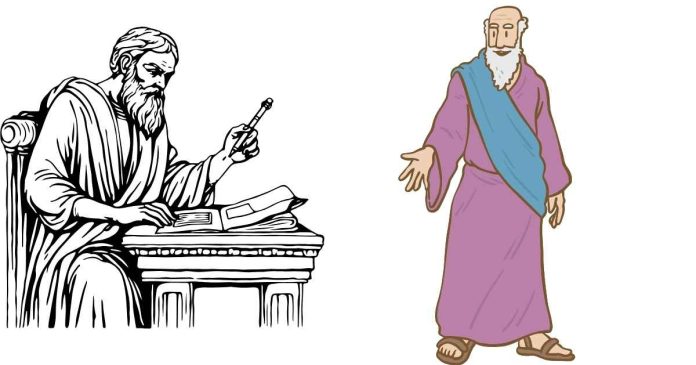The Book of Revelation, the final book of the Christian Bible, is traditionally attributed to the Apostle John. It is considered one of the most enigmatic and symbolic books of the Bible, filled with visions, prophecies, and allegorical language. According to tradition, John wrote Revelation while living in exile on the Isle of Patmos, a small, rocky island in the Aegean Sea. But when exactly did this writing occur? Let’s explore the historical context and scholarly perspectives on the dating of the Book of Revelation.
The Context of John’s Exile on Patmos
Before delving into the date of the writing, it’s important to understand the circumstances surrounding John’s exile. John, believed to be the author of the Gospel of John, had a significant role in the early Christian Church. However, during the late first century, Christians faced persecution under the Roman Empire, particularly under Emperor Domitian, who ruled from AD 81 to AD 96.
Traditionally, it is believed that John was exiled to Patmos for his faith, where he received the visions described in Revelation. The island of Patmos was located in the Roman province of Asia (modern-day Turkey) and served as a place of punishment and isolation for criminals and political prisoners.
Dating the Book of Revelation
The precise date when John wrote the Book of Revelation is debated among scholars, but there are two main theories based on historical and textual evidence:
1. Early Date: Around AD 68-70 (During the Reign of Nero)
Some scholars argue that John wrote Revelation during the reign of Emperor Nero (54–68 AD), particularly around the time of the Jewish War and the destruction of the Jerusalem Temple in AD 70. This view is based on the belief that the Book of Revelation reflects the persecution faced by early Christians during Nero’s reign, who was known for his brutal treatment of Christians.
Proponents of the early date point to the tone of Revelation, which they feel corresponds with the events surrounding Nero’s persecution, including the symbolic references to the “beast” (often associated with the Roman Emperor) and tribulation. However, the early date view is less widely accepted because it does not fully align with certain historical events mentioned in the text.
2. Late Date: Around AD 95-96 (During the Reign of Domitian)
The more widely accepted view is that John wrote Revelation during the reign of Emperor Domitian, around AD 95-96. This view is supported by early Christian writings, including the testimony of Irenaeus, a second-century church father, who explicitly states that John wrote Revelation “toward the end of Domitian’s reign.”
During Domitian’s rule, Christians were subjected to severe persecution. Domitian was seen as a tyrant and demanded emperor worship, which put Christians at odds with the Roman state. This persecution is often thought to have been the catalyst for John’s exile to Patmos.
In this late date context, the symbolism of Revelation is interpreted as a reflection of the oppressive reign of Domitian, with the “beast” representing Roman imperial power and the struggles of Christians under persecution.
Internal Evidence for the Date
The Book of Revelation itself provides some clues that can help us narrow down its date:
- References to Persecution: Revelation contains vivid descriptions of tribulation and suffering, which likely correspond to a period of Christian persecution. The late date theory aligns with the known persecution under Domitian, whereas the early date would likely align with Nero’s persecution.
- The Fall of Jerusalem: Revelation does not directly reference the destruction of the Jerusalem Temple (which occurred in AD 70), which could suggest a date after the event. This absence of direct mention may imply that Revelation was written after the fall of Jerusalem, supporting a later date.
- The Number 666: The famous number 666, associated with the “mark of the beast,” is often interpreted as a coded reference to the Roman Emperor. Some scholars suggest it could be a veiled reference to Domitian or Nero, which aligns with the late date theory.
Conclusion: The Late Date (AD 95-96) is Most Likely
While both early and late dates for the writing of Revelation have been proposed, the majority of scholars agree that the book was likely written around AD 95-96, during the reign of Emperor Domitian. This date is supported by early Christian testimony, internal evidence from the book itself, and the historical context of Christian persecution under Roman rule.
John’s visions, recorded on the Isle of Patmos, have had a profound influence on Christian eschatology and continue to be the subject of theological study and interpretation. Whether one views the text symbolically or literally, the Book of Revelation remains an integral part of the Christian faith, offering both a prophetic vision of the future and a reflection on the suffering and triumph of the Christian community.


